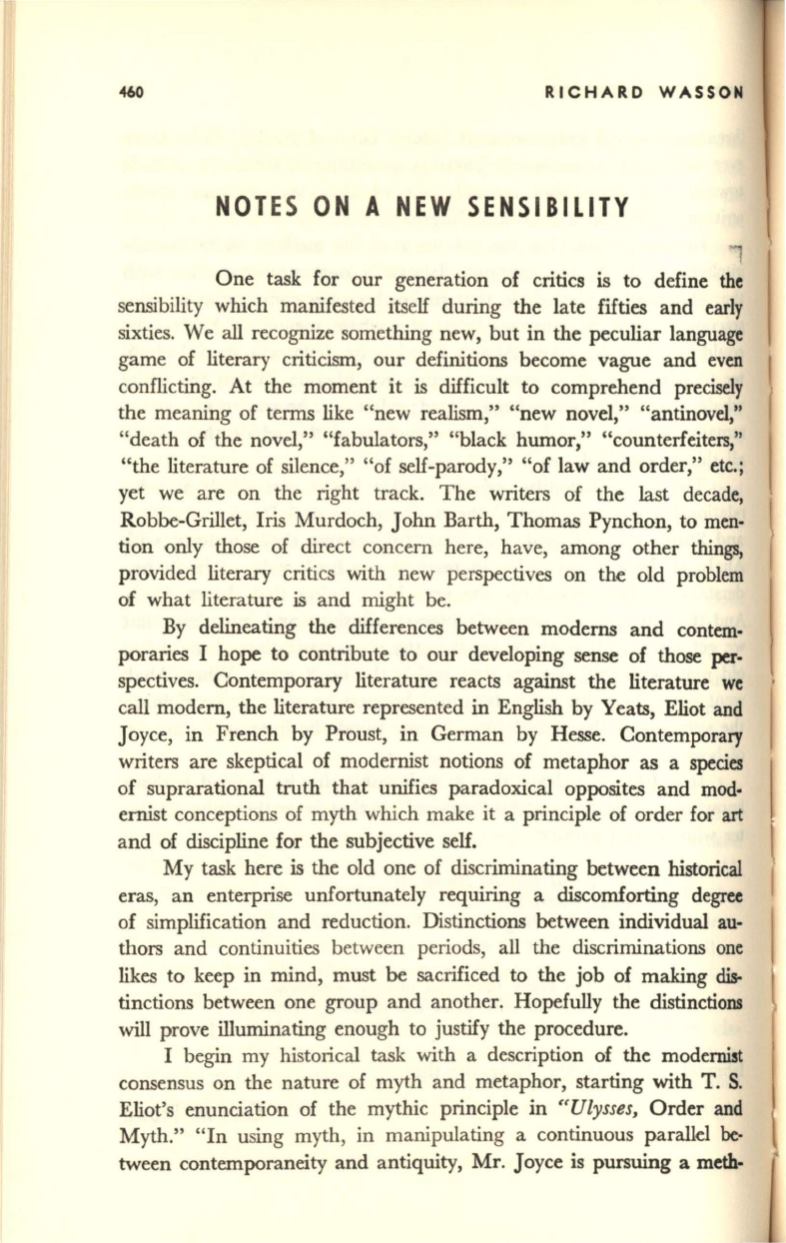
460
RICHARD WASSON
NOTES ON A NEW SENSIBILITY
One task for our generation of critics
is
to define the
sensibility which manifested itself during the late fifties and early
sixties. We all recognize something new, but in the peculiar language
game of literary criticism, our definitions become vague and even
conflicting. At the moment
it
is
difficult to comprehend precisely
the meaning of terms like "new realism," "new novel," "antinovel,"
"death of the novel," "fabulators," "black humor," "counterfeiters,"
"the literature of silence," "of self-parody," "of law and order," etc.;
yet we are on the right track. The writers of the last decade,
Robbe-GriIlet, Iris Murdoch, John Barth, Thomas Pynchon, to men–
tion only those of direct concern here, have, among other
things,
provided literary critics with new perspectives on the old problem
of what literature
is
and might be.
By delineating the differences between moderns and contem–
poraries I hope to contribute to our developing sense of those
per–
spectives. Contemporary literature reacts against the literature we
call modem, the literature represented
in
English by Yeats, Eliot and
Joyce, in French by Proust, in German by Hesse. Contemporary
writers are skeptical of modernist notions of metaphor as a
species
of suprarational truth that unifies paradoxical opposites and mod–
ernist conceptions of myth which make it a principle of order for
art
and of discipline for the subjective self.
My task here
is
the old one of discriminating between historical
eras, an enterprise unfortunately requiring a discomforting degree
of simplification and reduction. Distinctions between individual au–
thors and continuities between periods, all the discriminations one
likes to keep in mind, must be sacrificed to the job of making
dis–
tinctions between one group and another. Hopefully the distinctions
will
prove illuminating enough to justify the procedure.
I begin my historical task with a description of the modernist
consensus on the nature of myth and metaphor, starting with T. S.
Eliot's enunciation of the mythic principle in
«Ulysses,
Order and
Myth." "In using myth, in manipulating a continuous parallel
be–
tween contemporaneity and antiquity, Mr. Joyce is pursuing a meth-


